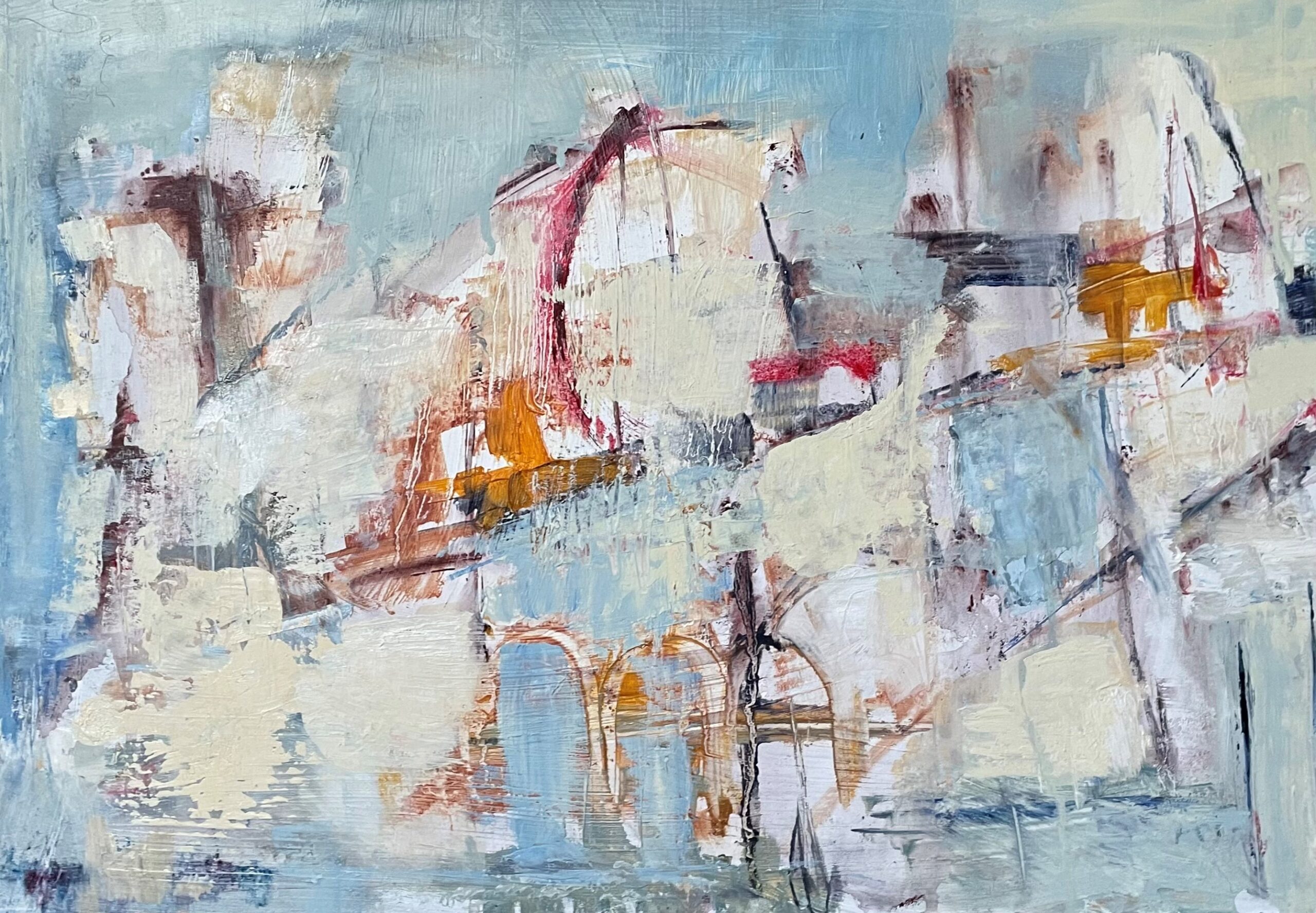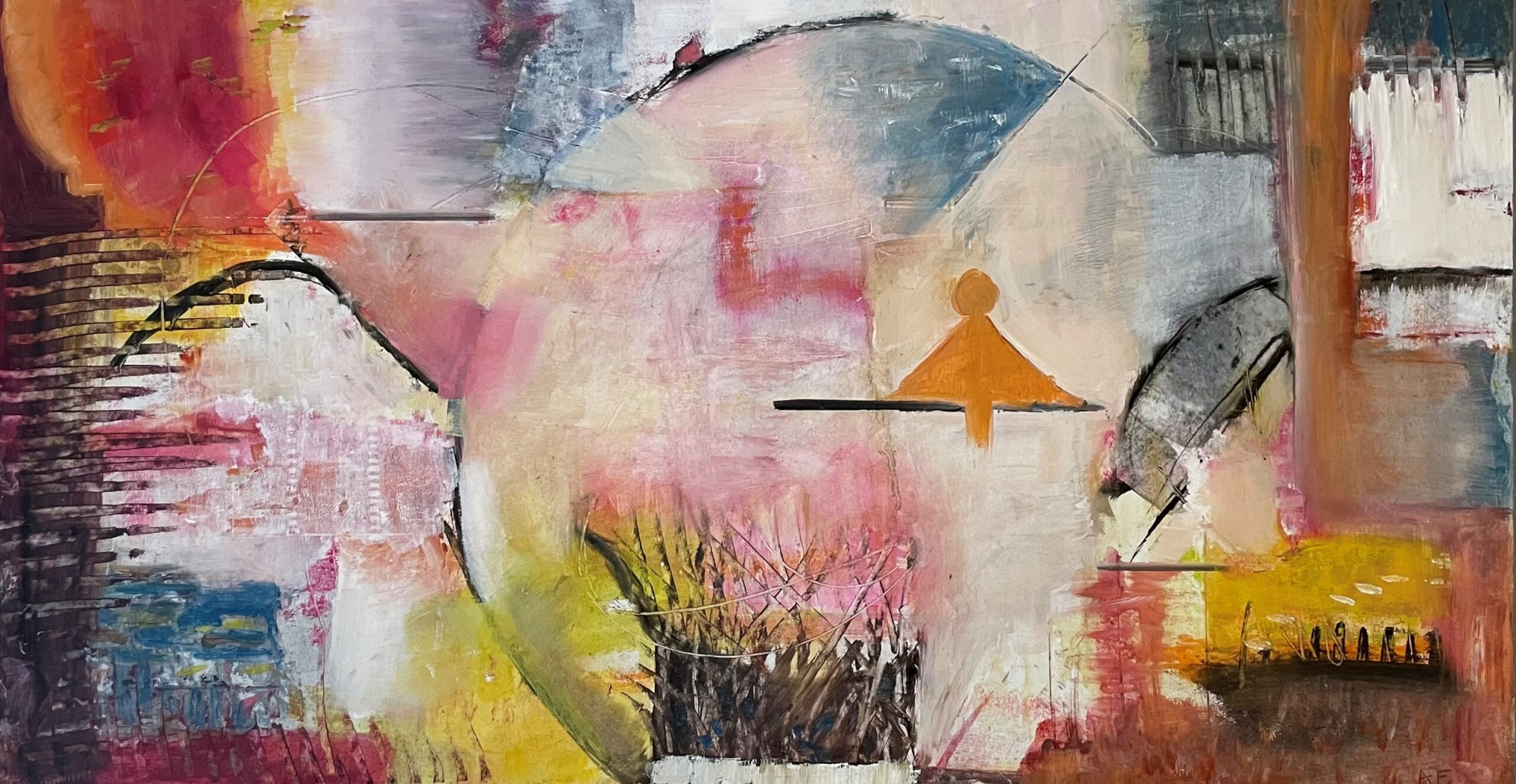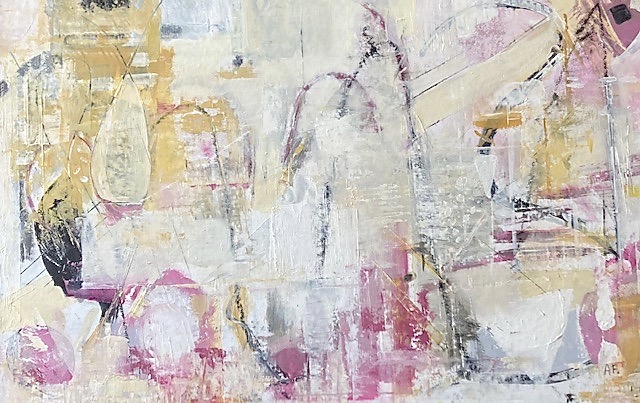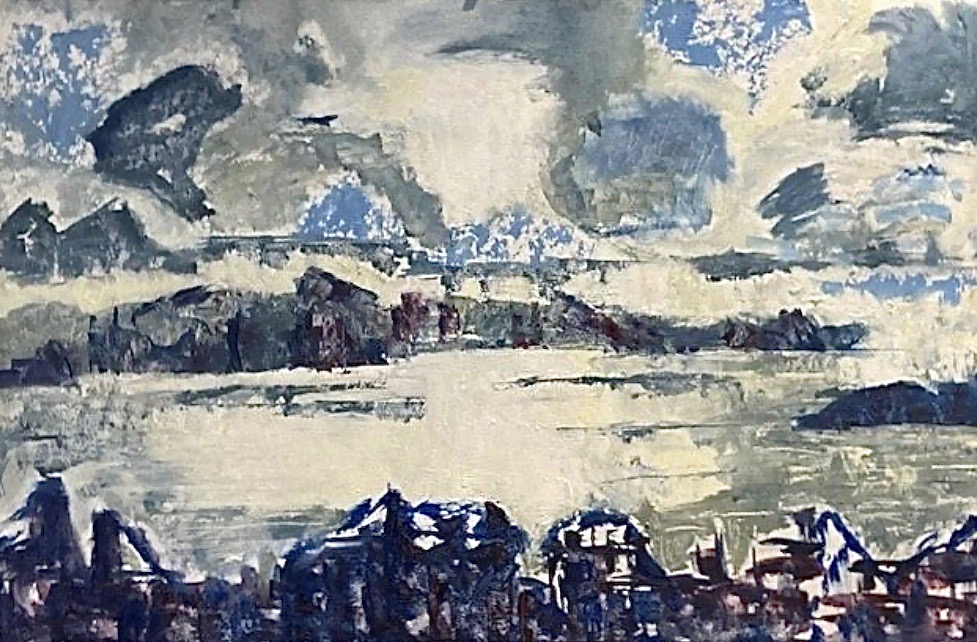Alexia Florman

Abstract art was a revolution when it began, as artists started to break away from the realism of figurative painting; that freedom of expression and interpretation of emotion of the world around us, that unique voice that an artist has with how they interpret colour and patterns. The structure of Alexia’s paintings signifies that representational illusion of something we know, the dry summers of continental Europe, the sallow palette of city life, or the diversity of bold colours of a metropolis, her hues are generous shades of illusion and the playful dance of all that stimulation of our surroundings and how they unconsciously affect us. We know that something feels familiar, and it’s the innuendo, that recollection of the recognised without words. Her subtle nuances in her compositional structure infuse her work with perception, that is both soft and strong, building on layers with both oil and methods with wax. “I was only ever really interested in Abstract art,” she tells me, as we sit inside a circular restaurant full of natural light on a cool spring day in London. Alexia explains how she is inspired by her surroundings; I have known her for most of my adult life, meeting mostly at family get-togethers and I am enjoying the exchange to talk more personally. There is an intimacy in the interpretation in what an artist is conveying, and at the same time not to understand too much and too over analyse.



Alexia explains how she started to take painting seriously just over 10 years ago, and already her work has caught the attention of collectors. She tells me how she learnt to be interested in painting when she spent her summer vacations in Greece as a small girl, their nanny encouraging her and her siblings to paint, she also recalls her parent’s passion and interest in art, and frequent visits to museums and exhibitions with her mother. Her Grandmother, an artist herself, had her own studio in Greece, which Alexia recalls visiting often when she was younger. After completing her graduation in the UK, she joined Christies, this was the beginning of a learning curve of visual information and she enjoyed it, “I learnt a lot visually” she tells me, describing it as a bit like the Antiques Roadshow only more ordered. It was a year later that she decided to attend the University of East Anglia to read History of Art for three years, and she describes how much she enjoyed the experience of spending her second year in the art capital in Venice, with their tutor.




Alexia surprises me though when she explains that she went to work in financial markets after graduating in History of Art. She started working for a financial newspaper as a journalist, writing about Euro Bonds, then for the French bank, BNP Paribas, she tells me. “I loved the buzz”. Learning everything about trading and markets, all on the job, “You could do that then” she exclaims. Then she had her first child, and when the baby was a year old she went back to the auction houses, this time working at Sotheby’s once or twice a week, Alexia emphasises how the trading experience, benefited her working on the telephone bidding, describing an ability to tune out background sounds when communicating with collectors and dealers, and how she always had her foot in the art world. Then about a decade ago, she started painting, at first it started with a simple Decoupage course, however, it was her fascination with perspective that really interested her. She tried various mediums classical drawing classes, in the Castcourt at the Victoria and Albert Museum, concentrating on figures such as the David by Michelangelo.




Alexia describes her education in art as quite traditional, learning classical techniques however she always knew she wanted to paint abstract work, it was the working with colours that fascinated her, the understanding of the visual effects of colours on us, and shapes, drawing inspiration from the teachings of Kandinsky. She describes how the biggest challenge for any artist is the blank canvas. She diverged from representational work, she enjoys building up of the layers, explaining that she has no idea what she will be doing before she starts painting. “It’s knowing when to stop that is the difficult part,” Alexia explains, and she has been known to paint over an artwork when she is not happy with it. Her second biggest influence after Jonathan Ellis is Nicholas Wilton, and she began to focus on her soul in her work, forgetting about the outside world for a bit whilst she paints. The focus is on the layering and seeing different things she emphasises. If you see interesting things in life, always go for the most difficult thing on the canvas.



She describes her inspirations, the colours of nature, the combination of what you see around you, and she turns to look around the large room we are sitting in “The combination of colours in everyday life, and bright colours” she emphasises. However, narrative is not necessarily important to her. With that, I ask her who her favourite artists are, “Picasso, as he pushes the limits” she emphases “Cézanne because of the way he brought an order to modern art” she explains, and then she brings up Kandinsky, “Even though there is no order, there is a lot of thought and processing”. I then asked Alexia about what she considers perfection, she describes the ability to see variety in form and structure and to put it together in a different way. “The best thing about the art world is the freedom to be able to do what you want to do”.
She has exhibited at the Chelsea Arts Society, her first exhibition was at The Hurlingham Club in 2019.
Interview: Antoinette Haselhorst
